Contributing more than £13bn to the tills of UK retailers, the tobacco category continues to be an essential part of the retail mix.
Tobacco and its accessories typically account for about a third of turnover in convenience stores where, despite a strong down-trading dynamic, it is actually growing in value - up 5.5% in the 12 months to June 09, according to IGD data.
Cigarettes continue to account for the lion’s share of the tobacco category and despite a slight dip on last year’s figures, mainly caused by recession-hit smokers downtrading to economy brands, the value sector continues to be the most popular, accounting for 33.75% of sales.
The strong downtrading dynamic among UK adult smokers has meant that the economy priced sector, although still the smallest with 13.9% of sales, has seen the most growth in the past 12 months. In fact, as the table on p48 shows, it’s the only sector of the cigarettes market to have experienced any growth at all, up from 10.45% in 2008.
And it is here, in the economy priced segment, that the UK’s big tobacco manufacturers are expected to focus most of their efforts in new product development over the coming few months.
However, Imperial Tobacco UK trade communications manager Iain Watkins says it is vital that convenience store retailers don’t forget the premium category, which although down on last year, still nets almost a quarter of sales. And with adult smokers of premium products more brand loyal than those of value or economy, it’s important to ensure that gantries are well-stocked at all times.
“Some 67% of those who smoke premium priced products will leave a store if their preferred brand is out of stock,” Watkins cautions. Sales of premium priced tobacco products, and in particular cigars, are also expected to pick up in the run up to Christmas as smokers “treat” themselves an important fact to remember when visiting the cash and carry in the next few weeks.
Sales of Roll Your Own (RYO) products have also continued to motor this year, building on the segment’s success over the past five years.
Figures from Nielsen Market Track for the year to July 2009 show the RYO segment to be up 15% in value and 20% in volume, and it’s showing no signs of slowing. Mark Aldred, marketing manager of cigarette paper manufacturer Republic Technologies, expects this rapid rate of growth to continue for at least the next three years with a continued focus on new product development from all those who operate within the RYO market.
And there’s certainly been no shortage of npd in 2009, what with Imperial’s not so mellow launch of Golden Virginia Yellow in March, and JTI’s ground-breaking launch of Benson & Hedges Gold and Silver Rolling Tobacco in June.
Not surprisingly, the papers and filters categories are also showing growth. Paper sales through independent retailers are up by 1.8% in the past year, according to Republic Technologies, while filters are up 8.8% through independents, where 34.2% of sales are made.
Within the trade, the first word that springs to mind when tobacco is mentioned is legislation. The two words go hand in hand these days and practically every recent issue of Convenience Store has included at least one story about tobacco legislation and the stiff penalites for transgressing them among its news pages.
And a ban on display is not the only legislative headache for retailers. Despite the introduction of significantly increased penalties for those caught selling tobacco to customers under the age of 18, Trading Standards bosses have called for these sanctions to be made even tougher.
Clearly, it has never been more important for retailers to be at the very top of their game when it comes to their underaged sales training, and while the No ID No Sale campaign is now active in more than 100,000 stores nationwide, recent months have also seen manufacturers wade in to help.
JTI recently added a new interactive underage sales training module to its trade website, www.tobaccoretailing.com. The new ‘Law and You’ section has clear modules for retailers and their staff on how to refuse sales and defuse confrontational situations as well as a quiz for retailers to test their learning. Check it out, you might come across some surprising results.
Recent months have seen calls from retailers to establish an industry-wide initiative to prevent underaged sales. The scheme would be based on the No ID No Sale policy, but also include new elements such as a step-by-step due diligence procedure.
The idea has been met with positive noises by many in the industry, but only time will tell if any concrete action will be taken.
And while on the subject of legislation, retailers should also be aware that it is now illegal to sell cigarette packets with the old-style text-only health warnings.
However, be aware that despite their name, three of the 14 pictorial health warnings do not display pictures, but large textual advice on how to stop smoking.
Retailers do, however, have until September 30, 2010, to sell through cigars, pipe and RYO with the former monochrome warnings.
The environment is not usually the first thing that retailers and smokers would associate with the tobacco industry, but manufacturers are working increasingly hard to change this.
The advent of the smoking ban in July 2007 meant that cigarettes are no longer visible inside pubs clubs and workplaces, but are twice as visible outside, where a lack of ashtrays forces many smokers to discard their used butts on the pavement.
With more than 122 tonnes of cigarette litter now dropped daily onto the UK’s streets more than double the levels seen before the ban the issue is fast becoming a serious one for local government, environmental groups and the tobacco manufacturers themselves.
August saw the launch of a new partnership between Imperial Tobacco and CSR Solutions to promote the ButtsOut personal ashtray to retailers and smokers. Imperial Tobacco UK corporate affairs manager Steve Stotesbury says: “While litter is a matter of individual responsibility, we see personal ashtrays as an important part of the answer in promoting considerate and responsible behaviour in the disposal of cigarettes.”
The move has been widely welcomed by councils and Keep Britain Tidy and is also likely to be welcomed by retailers, especially when they learn that they can make a 60% mark-up on the rrp of 99p.
Personal ashtrays aren’t the only ways in which manufacturers are working to make their products greener, though. BAT (which also produces a personal ashtray) has started replacing the foil in some of its cigarette packs with paper. The product is better for the environment as it is recyclable, but it also takes less energy to produce.
And in a world first, rolling paper brand Rizla has recently become Forest Stewardship Council (FSC) certified. Rizla brand manager Alison Williams comments: “Responsible management of the world’s forest is very important. Adult smokers will be able to purchase FSC certified Rizla rolling papers and be confident that the product has been independently certified to ensure it comes from forest sources that are managed to meet the social, economic and ecological needs of present and future generations”.
Environmental concerns are even being extended to the tobacco itself. Henri Wintermans owner Scandinavian Tobacco is set to launch a new chemical-free brand of RYO tobacco called Crossroad.
The recipe uses honey to retain the tobacco’s moisture and is expected to appeal to smokers who want a tobacco with more natural ingredients. “Crossroad will make a significant impact on the RYO tobacco market,” says Alastair Williams, Scandinavian Tobacco Group UK trade marketing and communications manager. “It will appeal to adult smokers who appreciate a natural tobacco taste and who wish to purchase premium RYO products at mainstream prices.”
With the economy’s green shoots still buried deep underground, sales of lower-priced tobacco products look set to continue blooming for the foreseeable future.
Sales of cigarettes with a lower price point are expected to keep increasing well into 2010, and it is likely that the recent proliferation of eye-catching limited-edition pricemarked packs on the market will also continue as a result.
And the economy is not just changing the design of cigarette packs it’s also changing the size. British American Tobacco recently relaunched its Pall Mall brand in a more wallet-friendly 19-stick pack an interesting move which could well be adopted by other brands in the coming months.
“The recommended retail price of £4.17 for a packet ensures that during the current economic climate consumers are able to purchase a quality product at an affordable price,” says Fatima Cengiz, BAT corporate communications manager for the UK and Ireland. “The decision for this move was a bold one from BAT’s point of view, however we are confident that this is what consumers want,” she adds.
Also in big demand from consumers at the moment is rolling tobacco. The undeniable value for money offered by RYO products has helped the sector flourish in the past 12 months as smokers try to get more puff for their pounds.
While the tough economic climate has prompted many adult smokers to make a straight switch from economy cigarettes to RYO, much of the sector’s growth is actually being driven by dualists adults, and particularly females between the ages of 18 and 34, who choose to smoke a mixture of the two.
However, this trend has actually thrown up its fair share of challenges to the tobacco manufacturers. As smokers eke out their supplies for longer by switching between the styles it is now more important than ever before for brands to invest in new packaging concepts which keep the tobacco product fresh for longer.
JTI did just that with the launch of Benson & Hedges Rolling Tobacco. The sub-premium RYO product, which made a huge splash at its summer launch, uses innovative new packaging techniques and sealing technology to keep the tobacco as fresh as possible.
In cigarettes, BAT also launched the new Reloc pack exclusive to Dunhill. Packs of Dunhill Reloc Red and Blue house a protective re-sealable foil casing which is said to keep the taste of the tobacco at its best.
No doubt the coming few months will see more developments of this nature.
With some of the highest tobacco prices in the European Union, it’s not hard to understand why the UK has become a prime target for the dealers of smuggled and counterfeit tobacco stock.
More than 50% of large-scale cigarette seizures in 2007/08 unearthed counterfeit goods, according to HM Revenue & Customs. Despite the efforts of the enforcement agencies and tobacco manufacturers, it is feared that this figure will grow in the recession.
Tobacco Manufacturers Association chief executive Christopher Ogden explains: “At a time of economic uncertainty, rising unemployment and high taxes, cheaper, unregulated counterfeit products are now even more appealing to the consumer.
“In the UK, a pack of legitimate premium cigarettes costs smokers about £5.85 per pack, and tax can account for up to 90% of the retail price of some tobacco brands. This selling price can be compared with the £2.50-£3 per pack a consumer would pay for a counterfeit product, which is not taxed.”
Efforts are being made to stem the problem, however. The past five years has seen an increase in the number of X-ray scanners in use at docks; the introduction of tougher penalties for those caught smuggling; public awareness campaigns; and, of course, new technology to help tell genuine products apart from fake.
A Memorandum of Understanding (MoU) has also been signed between the UK’s tobacco manufacturers and HM Revenue & Customs in a bid to improve intelligence sharing between all parties.
But more still needs to be done. The TMA and Tobacco Retailers Alliance are continuing to campaign for more funding for enforcement agencies to tackle the growing problem of illegal street sales after a survey revealed that 56% of corner shopkeepers were aware of smuggled tobacco being sold in their area.
And the call for greater resources for trading standards officers is likely to reach a crescendo in the next few months if government pushes ahead with its plans to ban the display of tobacco.
Retailers fear that display restrictions will blur the distinction between genuine and illegal stock making unregulated tobacco products even easier for criminals to sell. This appears to have been the case in countries with a display ban such as Canada, where in certain states contraband sales are now larger than the sales of legitimate product. Closer to home, concern is growing over the impact of the illicit trade in the Republic of Ireland, and UK retailers are waiting to see if the pattern will be repeated over here.





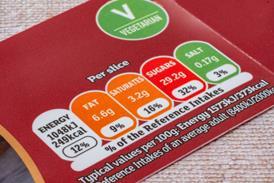
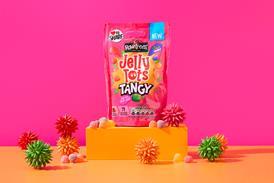













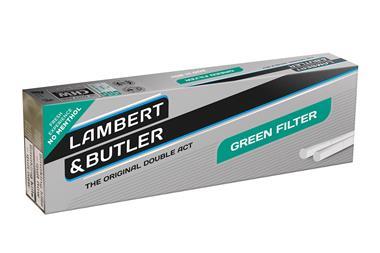
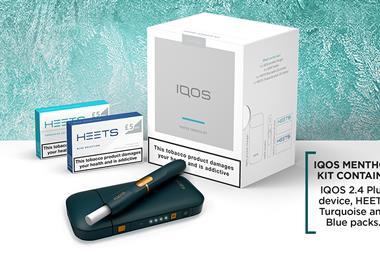

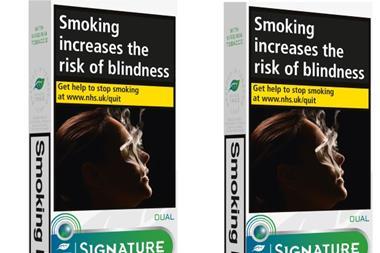
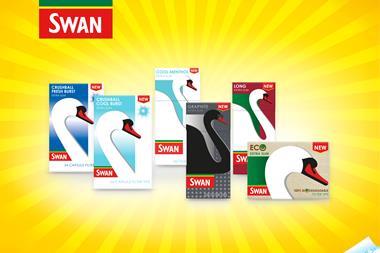
No comments yet